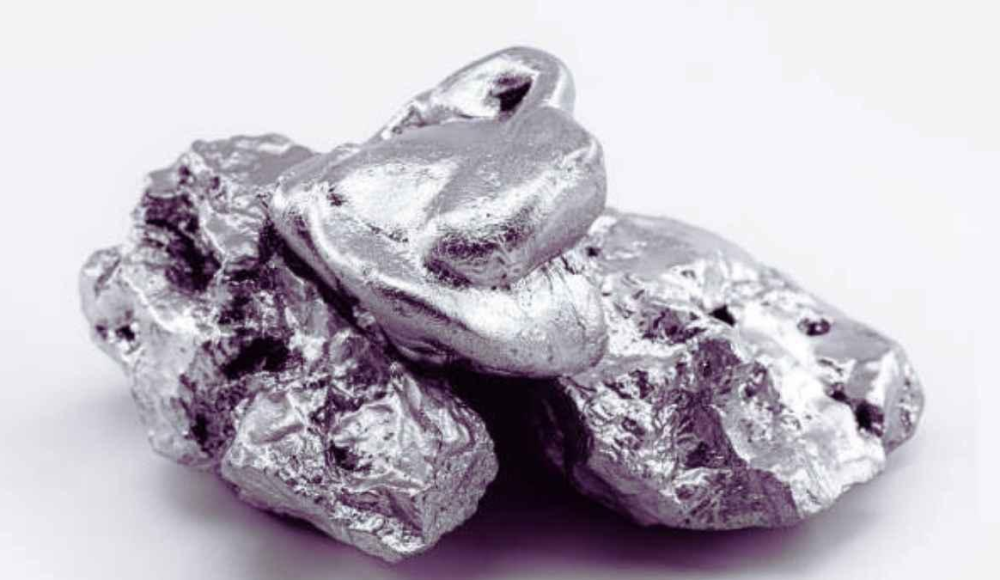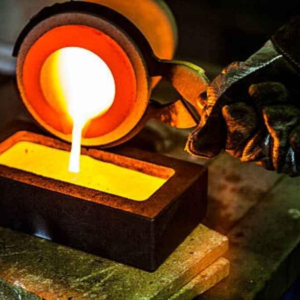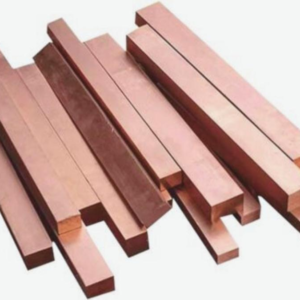Hai bisogno di fatti chiari sul punto di fusione del titanio? Il metallo brillante è indispensabile in tutto il settore aerospaziale, settore automobilistico, e industrie manifatturiere. La mancanza di conoscenze adeguate può comportare una scarsa selezione dei materiali e una lavorazione errata dei materiali. Questo articolo riguarda le proprietà di fusione del titanio.
A quale temperatura si scioglie il titanio?
Il titanio ha un punto di fusione di circa 1.668° Celsius o 3.034° Fahrenheit. L'alto punto di fusione del titanio non riduce significativamente la sua resistenza alle alte temperature. La temperatura di fusione gioca un ruolo importante nella fusione, saldatura, e leghe per gestirlo e applicarlo correttamente in molti progetti di ingegneria.
Informazioni di base sul titanio
Il titanio è una lega a bassa densità, elevato rapporto resistenza/peso ed eccellente resistenza alla corrosione. Ecco alcuni punti chiave sul titanio:
1. Proprietà chimiche
- Simbolo: Di
- Numero atomico: 22
- Gruppo: Metalli di transizione
- Densità: Di 4.54 g/cm³ che è inferiore alla densità dell'acciaio.
2. Proprietà fisiche
- Punto di fusione: In giro 1,668 °C (3,034 °F).
- Punto di ebollizione: Di 3 287 °C (5 949 °F).
- Colore: Generalmente, è grigio-argenteo e ha una superficie lucida.
3. Forza e durata
Il titanio ha un eccellente rapporto resistenza/peso. Utilizzato quindi quando sono necessari prodotti resistenti e leggeri. Ha la forza di resistere alla tensione simile all'acciaio ma è molto più leggero.
4. Resistenza alla corrosione
La resistenza alla corrosione del titanio è meravigliosa, soprattutto in atmosfere marine e acide.
5. Potenziale di lega
Il titanio può essere combinato con altri metalli, ad esempio alluminio e vanadio, per creare un materiale metallico combinato migliorato per determinati usi.
6. Applicazioni
Per le sue proprietà uniche, il titanio viene utilizzato in vari campi, Compreso:
- Aerospaziale: Parti e motore dell'aeroplano.
- Medico: Dispositivi medici e impianti con particolare attenzione agli apparecchi dentali.
- Industriale: Scambiatori di calore e apparecchiature per processi industriali.
- Beni di consumo: Accessori sportivi e gioielli sportivi.
Fattori che influenzano la temperatura di fusione del titanio
La temperatura di fusione del titanio può essere modificata in diverse condizioni. Ecco i fattori che influenzano la temperatura di fusione del titanio:
1. Purezza del titanio
È una regola generale poiché la presenza di impurità avrà un impatto piuttosto significativo sul punto di fusione. Una maggiore purezza del titanio significa un punto di fusione più vicino allo standard. Le impurità influiscono sul P.F. valore e proprietà.
2. Elementi di lega
Quando il titanio viene miscelato con altri metalli, anche la temperatura di fusione può essere influenzata. Per esempio, l'alluminio può influenzare il punto di fusione dell'acciaio. Può alzarlo o abbassarlo, a seconda degli altri elementi presenti.
3. Microstruttura
È noto che la dimensione del grano e la fase nella microstruttura del titanio influenzano le sue caratteristiche di fusione. Per esempio, maggiore è la distribuzione granulometrica, minore è la temperatura di fusione effettiva durante la lavorazione.
4. Tasso di riscaldamento
Il riscaldamento ad alta velocità può causare una fusione parziale anche quando la massa complessiva non ha raggiunto il normale punto di fusione, che pone sfide al trattamento.
5. Condizioni di pressione
La temperatura di fusione può dipendere dalle variazioni di pressione. A pressioni più elevate, si può vedere che il punto di fusione del titanio continua ad aumentare, che è un fattore essenziale nell'uso ad alta pressione.
Ragioni per cui il punto di fusione del titanio è elevato?
Il punto di fusione del titanio è significativamente alto, a circa 1,668 °C(3,034 °F). Diversi fattori contribuiscono a questa caratteristica, rendendo il titanio un materiale essenziale in applicazioni impegnative:
1. Legami metallici forti
Il titanio ha forti legami metallici grazie alla sua struttura atomica. Un numero elevato di elettroni di valenza conferisce agli atomi una maggiore capacità di interagire tra loro, il che significa una maggiore stabilità termica e un punto di fusione più elevato.
2. Struttura esagonale di imballaggio chiuso
La microstruttura del titanio è esagonale e compatta (Operatore sanitario) a temperatura ambiente. Una tale disposizione è efficace nel posizionare l'atomo denso in una piccola area, e la quantità di energia necessaria per separarli aumenta, con conseguente punto di fusione elevato.
3. Alta densità di dislocazioni
Le dislocazioni sono abbondanti nel reticolo cristallino del titanio. Migliora le proprietà meccaniche del materiale. Questi spostamenti richiedono una grande quantità di energia per essere superati, che a sua volta, aumenta la temperatura di fusione.
4. Presenza di elementi leganti
Il titanio è spesso utilizzato nelle leghe, che hanno anche punti di fusione elevati. La presenza di elementi come alluminio e vanadio migliora la temperatura generale di fusione grazie alle loro proprietà leganti.
5. Conduttività termica
La conduttività termica del titanio è inferiore a quella della maggior parte dei metalli. Perciò, è un buon accumulatore di calore. La proprietà prevista consente temperature più elevate senza passare facilmente allo stato liquido.
Proprietà termiche del titanio vs. Applicazioni
Il titanio ha una ricca caratteristica termica, rendendolo ideale per molti usi in molti settori dell'economia. Conoscere queste proprietà aiuta a spiegare perché il titanio è ampiamente utilizzato in condizioni difficili.
1. Alto punto di fusione
- Proprietà: L'elemento ha un punto di fusione di circa 1668 °C o 3034 °F.
- Applicazioni: Questa elevata temperatura di lavorazione consente anche l'applicazione di materiali sintetici nelle strutture aerospaziali, Per esempio, motori e montanti, dove le alte temperature sono tipiche dell'ambiente.
2. Bassa conduttività termica
- Proprietà: Il titanio ha un coefficiente di conduttività termica relativamente basso rispetto a metalli come rame e alluminio.
- Applicazioni: Questa proprietà rende il titanio adatto all'uso negli scambiatori di calore e nelle parti termiche dove non è previsto il trasferimento di calore e le parti delicate necessitano di protezione.
3. Dilatazione termica
- Proprietà: Il titanio ha un coefficiente di dilatazione termica abbastanza buono.
- Applicazioni: La stabilità del materiale alle variazioni di temperatura è auspicabile nelle applicazioni aerospaziali e automobilistiche in cui le parti devono mantenere le loro dimensioni anche sotto carichi elevati.
4. Resistenza al calore
- Proprietà: Il titanio ha i vantaggi aggiuntivi di elevata resistenza e, cosa ancora più importante, resistenza al cedimento alle alte temperature.
- Applicazioni: Ciò lo rende adatto per l'impiego in applicazioni come i motori a reazione.
5. Resistenza all'ossidazione
- Proprietà: Il titanio reagisce anche con il calore, formando uno strato di ossido che non consente ulteriore ossidazione.
- Applicazioni: Questa caratteristica è vitale nei processi chimici e nelle operazioni marine poiché l'attrezzatura è spesso esposta a condizioni corrosive ad alte temperature.
Punto di fusione del titanio vs. Acciaio inossidabile
Per approfondire le differenze tra titanio vs. acciaio, qui presentiamo una tabella comparativa:
| Proprietà | Titanio | Acciaio inossidabile |
| Punto di fusione | 1,668 °C (3,034 °F) | 1,370-1,540 °C (2,500-2,800 °F) |
| Densità | 4.54 g/cm³ | 7.75-8.05 g/cm³ |
| Resistenza alla corrosione | Eccellente | Bene, varia in base al grado |
| Conduttività termica | Basso (Di 21.9 W/m·K) | Moderare (Di 15-25 W/m·K) |
| Rapporto resistenza-peso | Alto | Moderare |
| Applicazioni | Aerospaziale, impianti medici, ambienti marini | Utensili da cucina, costruzione, settore automobilistico |
Conclusione
Insomma, poiché il titanio ha un alto punto di fusione, è ideale per l'uso in aree con temperature elevate, come l’aerospaziale e la medicina. È leggero, eccellente resistenza alla corrosione, e l'elevato rapporto resistenza/peso lo rendono ideale anche per altre applicazioni rigorose. La conoscenza di queste proprietà è inevitabile quando si sceglie il titanio nei processi di ingegneria e produzione. Se hai bisogno di ulteriori consigli sul titanio, Massima precisione sarà lieto di aiutarvi nella scelta del materiale migliore. Se hai altre domande o hai bisogno di maggiori informazioni non esitare, e non esitate a contattarci!




2 pensieri su "Ecco tutto sul punto di fusione del titanio”